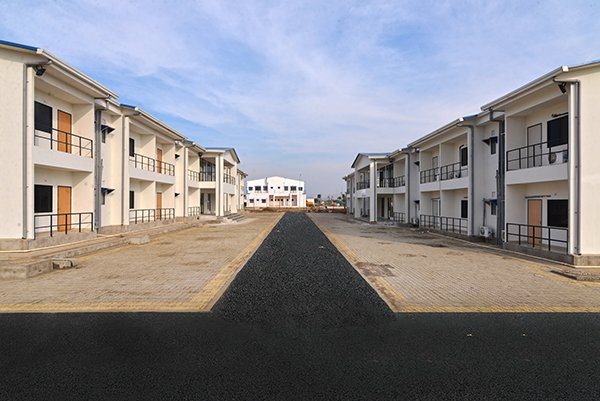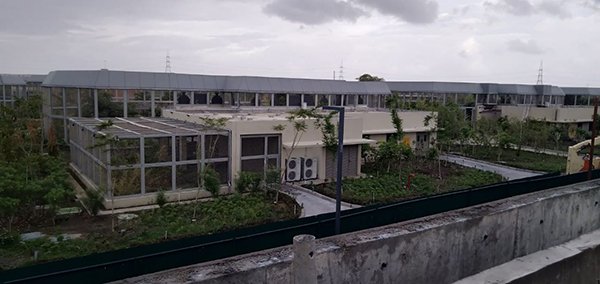Modular construction is emerging as a game-changing approach that promises to reshape the way buildings are designed, fabricated, and assembled, writes Gaurav Awasthi, DGM – BD & Marketing, Everest Steel Building Solutions.
Modular construction has been in existence for some time, be it pre-engineered buildings or precast concrete structures. Growing awareness, ease of construction and less laid-down area requirements eventually transform to time saving and faster return of investment, all of which could be attributed to the raising popularity of modular construction.
Addressing Infrastructure needs
India’s rapid urbanisation has led to a substantial infrastructure demand, particularly in urban centers. Modular construction presents an effective solution to address this shortage, allowing for the quick construction of houses, hospitals, schools and other important infrastructure. Government initiatives like ‘Housing for All’ align perfectly with modular construction’s ability to deliver quality housing units in a short span of time.
The Indian government’s ‘Make in India’ initiative has paved the way for the growth of the modular construction sector by encouraging local manufacturing. Additionally, streamlined approval processes and evolving building codes are supporting the integration of modular construction into mainstream building practices.
As the knowledge of modular construction becomes more pervasive, pre-engineered buildings and prefab structures will have more demand. Though India is not leading the trend of modularisation, it is not far behind other nations. The growth of modular construction in India depends on the factors such as manufacturing cost, transportation, accurate construction planning and availability of skilled labour. Technological advancements on the manufacturing front and digitisation of processes are going to impact cost economics which will affect the growth rate of modularisation in India.
The modular advantage
As the construction industry moves towards greener solutions, PEB offers unique advantages such as disassembling and reassembling the structural components at another location and reducing material wastage by controlled manufacturing processes in the modular construction space. The market of pre-engineered buildings will continue to grow rapidly in the coming years because of GoI policies which are intended drive large investments by Indian and foreign entities into commercial and industrial infrastructure. Logistics centers, data centers and warehouses are going to be major drivers of PEB industry in India.
The path forward
While modular construction holds immense promise, it is not without its challenges. Adapting to local regulations, training a skilled workforce for factory production, and overcoming skepticism within the construction industry are areas that need attention. Addressing these challenges will require collaborative efforts from stakeholders, including government bodies, construction companies, architects, and developers.
Modular construction is poised to revolutionise the construction landscape in India. As the country strives to meet its urbanisation and housing needs, this innovative approach offers a way forward that combines speed, quality, and sustainability. With government support, evolving industry practices, and a growing number of successful projects, modular construction is not just a trend; it is a cornerstone of India’s future urban development. As the pieces of this puzzle come together, modular construction is building the future of India, one module at a time.
(Contributed by: Gaurav Awasthi, Everest Steel Building Solutions)







I don’t think the title of your article matches the content lol. Just kidding, mainly because I had some doubts after reading the article.
틱톡 美사업 매각 위해 중국 관세 조금 낮춰줄 https://bammin.info/수도
美USGS 미얀마 강진 사망자 1만명 넘을 확률 https://bammin.info/71퍼센트우려
이란 미 이스라엘 핵구실 공격시 핵무기 개발 본격화 https://bammin.info/위협
머스크 300억원 퍼부었는데 ··위스콘신 대법관 선거 https://bammin.info/진보후보 승리
머스크의 스페이스X 美국방부와 8조 위성발사 https://bammin.info/계약
머스크 vs 나바로 관세 충돌에 포드 CEO는 https://cutypapers.com/머스크 편?
EU 美철강관세 보복 90일 보류 트럼프 조치에 https://cutypapers.com/화답
네타냐후 아들 팔레스타인 독립 인정 추진 마크롱에 https://cutypapers.com/엿 먹어라
타국 전쟁에 한국군 끌려간다? 일본 멋대로 하나의 전장 제안 미국 https://cutypapers.com/반응은?
김치 먹어라 미국 전문가 뜻밖의 다이어트팁 https://cutypapers.com/이유는?
DHL 트럼프 관세전쟁에 800弗 이상 화물 美배송 일시중단 밤놀자주소
美 중국과 관세갈등 지속불가능 아주 가까운 미래에 완화 예상 밤놀자
美법원 트럼프 정부의 공립학교 DEI 정책 폐지 시도 제동 밤놀자최신주소
관세 늘면 소득세 줄거나 면제 트럼프 성난 민심 달래보지만 밤놀자주소
경험 부족한 등산객은 못 오르게 에베레스트 등반 자격 제한 추진밤놀자
아마존 창업자 베이조스 향후 1년간 6.6조원 규모 주식 매도 밤놀자
발표대로 관세 오르면 美연준 의장 파월 인플레 실업 위험 경고 밤놀자주소
파키스탄 인도 상대 군사작전 개시 핵 보유국간 확전 현실화 밤놀자
Can you be more specific about the content of your article? After reading it, I still have some doubts. Hope you can help me.
50 년간 관광지로 활용중인 美 최악 교도소 알카트라즈 하루 운영비 3배 달해 재개장 힘들듯 밤놀자주소
베이비몬스터 트레저 중국 팝업 스토어 성황 밤놀자주소
이스라엘 美 트럼프 중동 순방 중 가자지구 공습 약 200명 사망 밤놀자
젤렌스키 美 협상서 멀어지면 안돼 주요국 고위급 회담 제안 밤놀자최신주소
지진난 것도 아닌데 650년 된 명나라 건축물 기와가 와르르 밤놀자주소
아이폰 미국서 만들면 대당 가격 480만원 된다밤놀자
역대 최대 규모 필리폰 인니 카리문섬 선박서 4000억대 밤놀자최신주소
각국 美관세 혼란에 신중 EU 무역협상 예정대로 진행 밤놀자최신주소
조언 좀 해주세요 트럼프 만나는 독일 총리 유경험 정상들에 SOS 밤놀자주소
러시아 쇼이구 서기 김정은과 접견 북한군 기억 영원히 할 것 밤놀자주소
트럼프 LA 이민 시위에 주방위군 투입 미 국방 해병대도 준비 밤놀자
최대 30만명 죽을 수 있다 日이 난카이 대지진 공포에 떠는 이유 밤놀자주소
美해병대 이민단속 반대시위 LA 현장 투입 1992년 후 처음 밤놀자
美 州의원 부부 살해 용의자 체포 정치테러 공포 확산 밤놀자최신주소
美국방 軍 준비 완료 트럼프 이란 결정 기다리며 최종 명령 보류 밤놀자주소
메타 스케일AI 대규모 투자 전 퍼플렉시티도 인수 타진 밤놀자